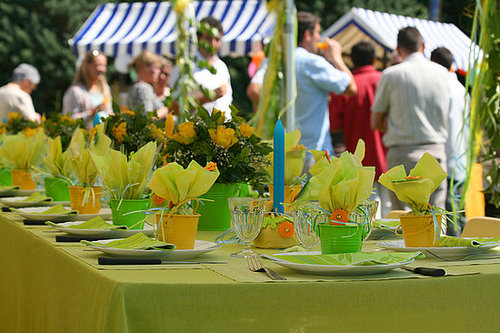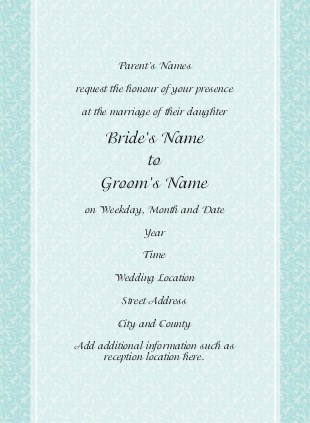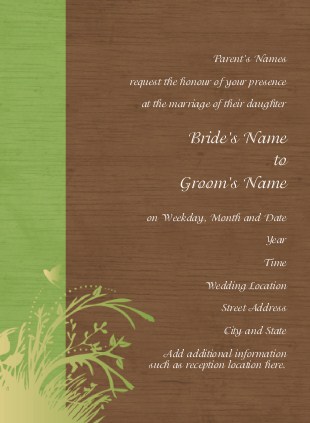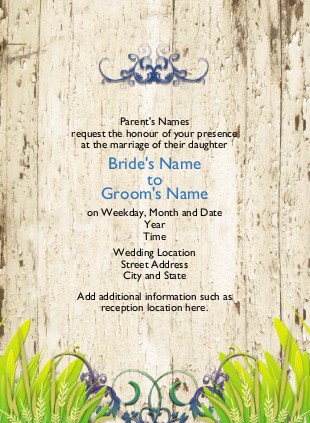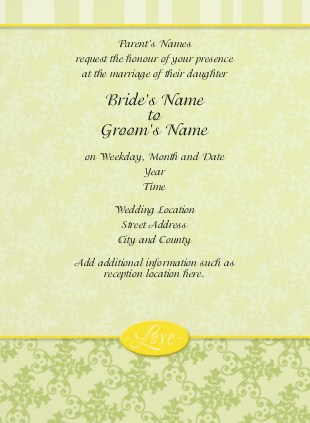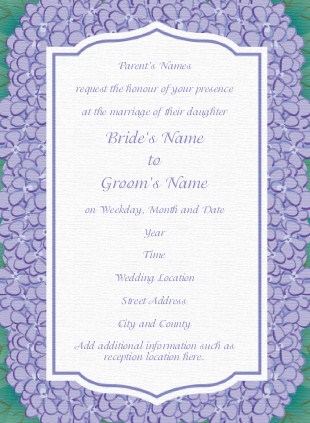A wedding invitation is just like an invitation to a very important, very exciting party. The only real difference is that there’s a lot more information that you have to include to help your guests prepare for the big day. Your invitees will need to know everything from where to go, to what to wear, to what their menu options are.
There would be nothing worse than ordering your wedding invitations, only to realise when they arrive that you’ve forgotten to include an important detail. What a waste of time and money that would be! Luckily, we’ve put together this handy guide for you to look over while you’re writing your invites. That way, you’ll be sure not to miss anything out.
Names of the Bride and Groom
The first thing your guests are going to need to know is who’s getting married. Your full names should feature front and centre of your wedding invitation.
Traditionally, the bride’s parents act as the hosts (because they’re the ones paying for the wedding. So, this part is normally written from their perspective. For example:
Angela and Robert Smith
request the pleasure of your company
at the wedding of their daughter
Susan Alice Smith
to
Jonathan Mark Richards
If the groom’s parents are hosting, of course, you’d write the names the other way around.
At modern weddings, it’s becoming more common for the couple getting married to act as their own hosts. You might word it as such:
Susan Alice Smith
and
Jonathan Mark Richards
invite you to join them in the celebration of their marriage
Are you going for a more casual feel? If so, feel free to word it any way you like. For example: “Susan and Jonathan are tying the knot!”
Address of the Venue
Your invitees will need the full name and address of the wedding venue. Make sure to include the postcode, so that guests who are driving can input this into their car’s satellite navigation system.
If your wedding breakfast or wedding reception will be held at a different venue (for example, you’re getting married at a church but having the reception at the village hall), then also include the full address of the reception venue. You could include this information on a separate ‘reception card’ if it won’t fit on the main invitation.
Ceremony Start Time
Obviously, your guests need to know what time to be there. You should always write the actual time that the ceremony will start. Your guests will naturally arrive around 20-30 minutes before this time.
Don’t be tempted to put an earlier time to be ‘safe’. If you write 11:30, your guests will likely turn up around 11, meaning they’ll have to wait an hour for the wedding to start!
If there will be a break of longer than an hour between the wedding breakfast and the reception, include the reception start time too. This way, guests that choose to go home in-between will know what time to come back. It’s also helpful to include an approximate end time.
Wedding Website
Wedding websites are extremely handy in this day and age. You can include all the extra information and details here that you can’t fit on the invitation itself (such as the gift registry). Get your wedding website up and running before you send the invitations out, and include a link to it on the invitation.
Directions
It’s a good idea to include either written instructions or a map to help guests find your venue. This is particularly helpful for older guests, who might not simply be able to Google the address.
Add this to the invitation itself, if there’s room. If not, you could have a separate ‘Directions’ card, or make a ‘Directions’ page on your wedding website.
Other helpful bits of information you could add include:
• Telephone numbers for local taxi companies
• Public transport details (the name of the nearest railway station, local bus routes and timetables)
• Nearby car parks and their fees (if your venue doesn’t have on-site parking)
Nearby Accommodation
If any of your wedding guests will be travelling to attend your wedding, you should include details of nearby accommodation (local hotels and B&Bs). Include a few different options at various price ranges, as your guests will all have different budgets.
You can even enquire with local hotels before you do this, if you’re expecting more than 10 guests to need hotel rooms. Many hotels will offer a special discount for your guests if you reserve several rooms in advance.
You can put this information on the invitation itself, or on a separate note card. Alternatively, have an ‘Accommodation’ page on your wedding website. Feel free to skip this if all of your guests are local (living within an hour’s drive of your venue).
Menu Options
If all of your wedding guests will be eating the same food, there’s no need to include the menu. You might not have even finalised the menu before your invitations are sent out, and that’s perfectly OK.
However, if you would like to offer your guests a choice of food, you’ll need to include the menu along with their invitation. This will allow you to put together a pre-order to give to your caterer before the wedding.
Most people do this by including a separate ‘menu card’, with check-boxes next to each meal option so that your guests can indicate their choice.
Gift Registry Details
Traditional wedding etiquette states that you should never include your gift list on the wedding invitation itself. This is because it can be seen as tacky or ‘gift grabby’. But wedding guests are expected to bring a gift, and you’ll want to give them some guidance on this.
So, most people give guests this information in one of two ways:
• Have a ‘gifts’ page on your wedding website, with a link to your registry, or an indication of the kinds of gifts you’d like (vouchers, cash, etc)
• Spread gift registry information through word of mouth. This is how it was always done before websites existed! Tell your wedding party, close friends and family where you’re registered, and ask them to pass this information on to any guest that enquires.
Dress Code
Most weddings in the U.K. are formal affairs (also known as ‘black tie optional’). This means that men come dressed in a formal two-piece or three-piece suit, and a necktie or bowtie. Ladies can either wear a formal dress, a trouser suit or a skirt suit. If you don’t give your guests any hint as to what to wear, that’s what they’ll assume.
If you have a different dress code in mind, or even a theme that you’d like your guests to match (such as ‘beach chic’), you should mention this somewhere on your invitation or on your website. Nobody wants to turn up to a wedding under- or over-dressed.
Additional Information
We’ve covered the basics, but depending on the specifics of your big day, there might be other things that your guests need to know. For example:
• If the wedding will be held entirely outdoors, mention this so that your guests will know to bring appropriate footwear and umbrellas
• If there’s an adult-only policy, you must include this information prominently somewhere, so that your guests can arrange babysitters for their children
• Will guests have to pay to park on-site? They’ll assume that parking is free, unless told otherwise
• Is the bar cash-only or card-only? Make sure everyone comes prepared!
• If you’re not going to be serving a meal at your evening reception, you may wish to advise evening guests to eat before they arrive
Simply put yourself in the place of one of your guests, and think about what you’d want to know.
RSVP Instructions
Finally, and most importantly, you must give your guests some way to reply to the invitation! You have a few options here:
• Include a reply card with your wedding invitation (along with a stamped, addressed envelope for your guests to send it back in)
• Add your e-mail address or phone number for your guests to contact you on
• Have a form on your wedding website that your guests can fill out and send to you digitally
Make sure that as well as giving your guests space to write their name (and the name of their ‘plus one’), there’s also space for them to list any dietary requirements, such as allergies and intolerances.
Don’t forget to also include an RSVP deadline. This is the date by which your guests must have sent their response. Make this date at least a week before you need the final head count, so that you can chase up anyone who’s forgotten to reply.
Are you ready to start designing your perfect wedding invitations? If so, click here to view all of our beautiful wedding invitation templates, or create your own from scratch. They’re all fully editable and customisable, and supplied with envelopes for no extra cost!
